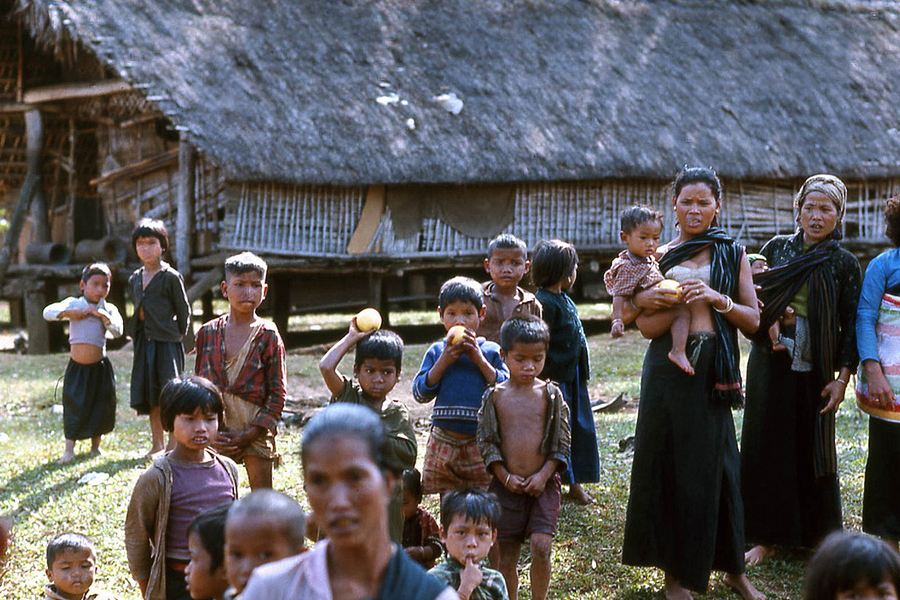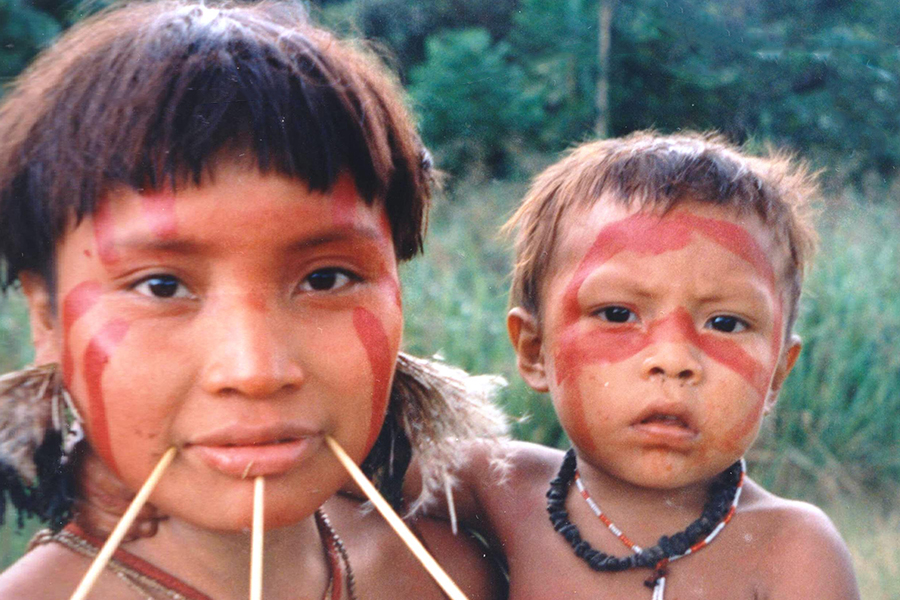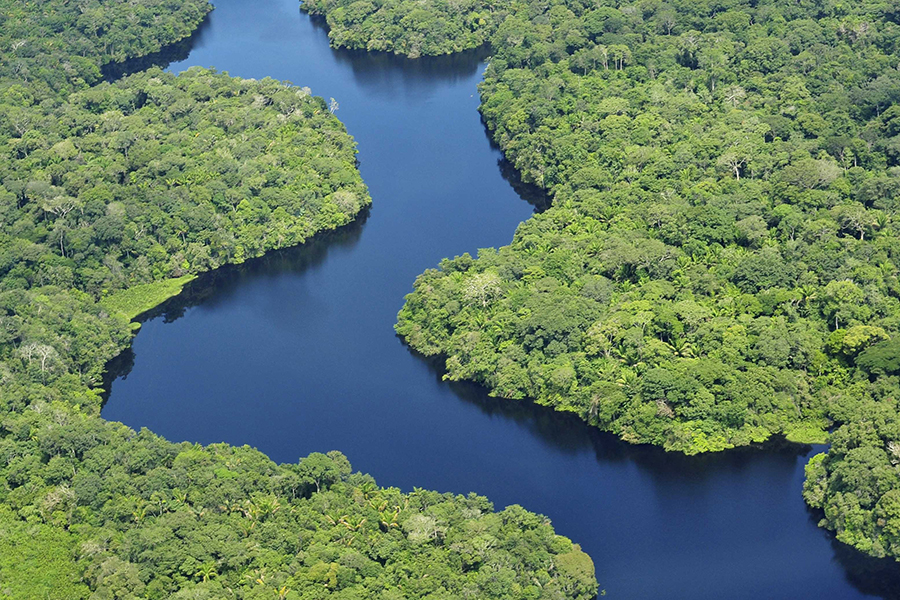10. Sentinelese People

North Sentinel Island, India
The Sentinelese are about as isolated as they come. Still hunter-gatherers, their language is unknown and bears so little resemblance to the languages of their neighbors that it can't be understood. Attempts to contact them have either been met with retreat or a hail of arrows like the one fired at a 1974 National Geographic expedition. A few years ago when a couple of (possibly drunk) fishermen wound up on the island, they were promptly killed, and attempts to retrieve the bodies were met with even more arrows.
9. Jarawa People

Andaman Islands, India
The Jarawa people live near the Sentinelese, although efforts to use Jarawan language to understand the Sentinelese have failed. That suggests that these two groups of peoples have been isolated even from each other. The Jarawan have been cut off from the "modern world" for thousands of years, surviving as hunter-gatherers. A brief span of tourist contact introduced unfamiliar foods, tobacco, and alcohol to the tribe, causing massive problems for a group unaccustomed to any of those things. The Indian Supreme Court has enacted a ban on tourism, and there is talk of closing the road connecting Port Blair to the islands completely.
8. Ruc People

North Vietnam
The Ruc people were first spotted by a group of North Vietnamese soldiers during the Vietnam War, but the tribe retreated into the woods and caves. The government began searching for them and eventually did draw them out, offering them clothing, housing, and a farm. The Ruc have grown in 50 years from around 100 to about 600, and the country recently saw the first Ruc to graduate university. That said, the Ruc prefer their traditions to "modern" living, continuing to practice witchcraft rituals and often retreating back to the caves, to the embarrassment of the government, which seems torn on whether to "civilize" them or show them off to tourists.
7. Lacandón People

Chiapas, Mexico
The Lacandón people are believed to be the last uncontacted people in North America. They seem to be a melting pot of various Mayan groups who fled the conquistadors together, resulting in their various dialects melding into a unique language and culture. Today they number over 500, weathering threats to their existence like the Zapatistas who took up headquarters in the Lacandón Jungle in the '90s. Research into their fashion indicates that they have made contact with outsiders, including other Mayan groups over the course of their history, but their cultural conservatism runs deep, and they remain one of the most isolated societies in the world.
6. Tagaeri People

Yasuni National Park, Ecuador
The Tagaeri are a clan belonging to an Ecuadoran indigenous group called the Huaraoni. Despite the fact that the area around them is supposed to be an "untouchable" zone for logging and oil drilling, people keep trying anyway. We know that because the Tagaeri keep murdering them. In addition to the encroaching modern world, their existence is threatened by another uncontacted tribe called the Taromenani, with whom they are at war.
(image via matthewitt, CC)
5. Yanomami People

Border Between Venezuela and Brazil
There are several isolated tribes in Venezuela, of which the Yanomami is the largest. Unfortunately, they seem to be living right in the hub of illegal gold mining. Initial impressions of the group were colored by early antropologists who described them in terms of a perpetual state of war. While the uncontacted factions do seem to be in conflict, both with other tribes and with illegal encroachers, research suggests this is a result of their circumstances, not an inherent part of the culture.
4. Toromona People

Madidi National Park, Bolivia
There are at least five uncontacted groups in Bolivia, most of which occupy national parks and reservations. Some of them, like the Yuqui, are isolated pockets or families of cultures that have been contacted. Others, like the Toromona, live in voluntary isolation in a set-aside area in Madidi National Park. A Norwegian biologist went missing trying to seek them out in 1997. There are even other groups that are rumored to inhabit the area, but haven't yet been proven.
3. West Papua's Uncontacted Peoples

Papua New Guinea
West Papua is estimated to be home to as many as 44 uncontacted tribes, spread across nine regions on the islands and even a few on the eastern Indonesian islands. A BBC Four documentary detailed, among other things, a controversial American tour guide who led expeditions into West Papua with the express purpose of making first contact. Not only does contact threaten these groups with diseases that neither their immune systems nor medicine can handle, it also exposes them to the Indonesian government, which doesn't have a stellar human rights record in West Papua.
(image via takuya-photography, CC)
2. Carabayo People

Río Puré National Park, Colombia
Colombia houses several isolated groups of peoples, but protections offered to them are slim. One group, the Nukak-Maku, was largely wiped out by disease after contact with explorers. Another group, the Carabayo, are so isolated they had to be photographed from the air. Previously, brief encounters with humanity have primarily been violent conflicts with rubber tappers and slavers, so their reticence to get in touch is understandable.
(image via Brian Moriarty, CC)
1. Brazil's Uncontacted Tribes

Mostly Within the Amazon Rainforest
Brazil holds possibly 77 uncontacted tribes. The government actually has an agency set up, FUNAI, to protect Indian interests and culture. Last year, a tribe emerged from the woods in Acre, Brazil, seeking protection from loggers and drug traffickers who were wiping them out, driving home an important point about uncontacted tribes: they don't live in a bubble of isolation. They're almost always aware of "civilization," but choose not to make contact. While history seems to confirm the wisdom of that decision, the fact that poachers and loggers are approaching them anyway has officials questioning whether the no-contact policy is still wise.
 Author
Garrett Steele
Last Updated: November 11, 2023
Author
Garrett Steele
Last Updated: November 11, 2023
